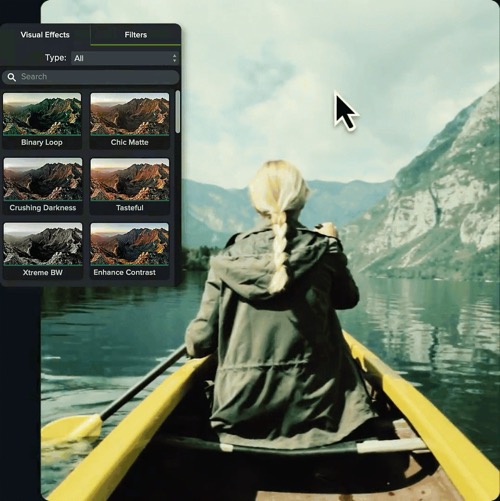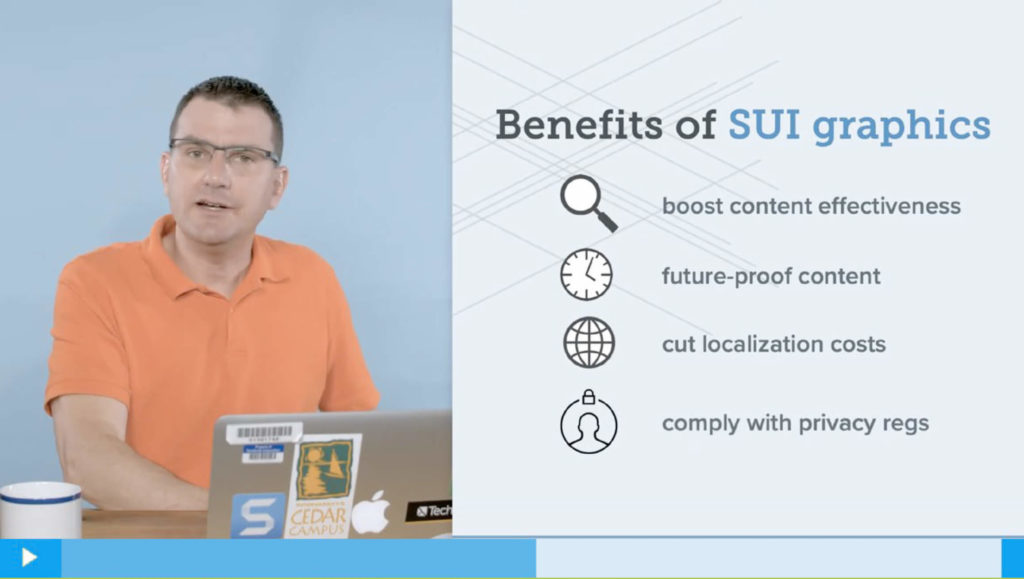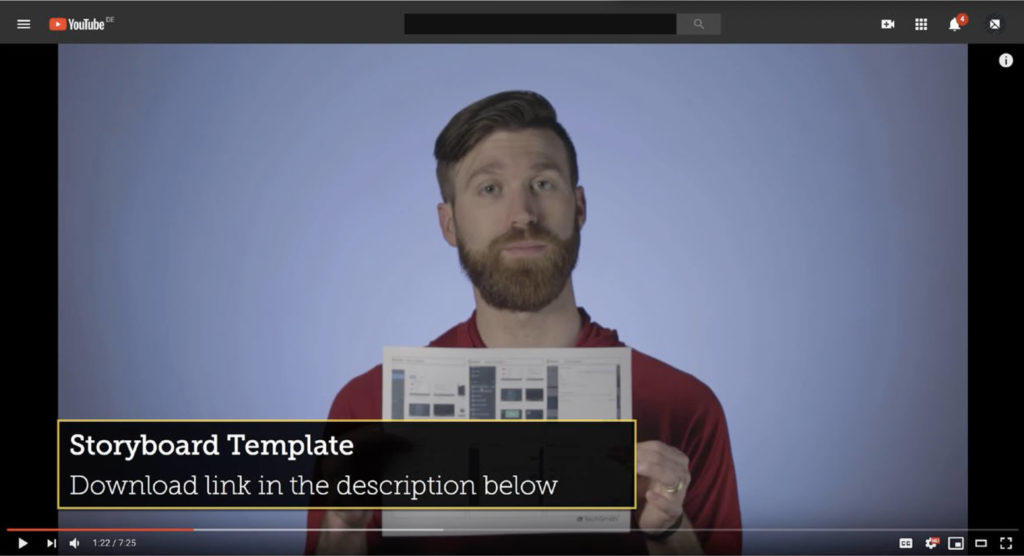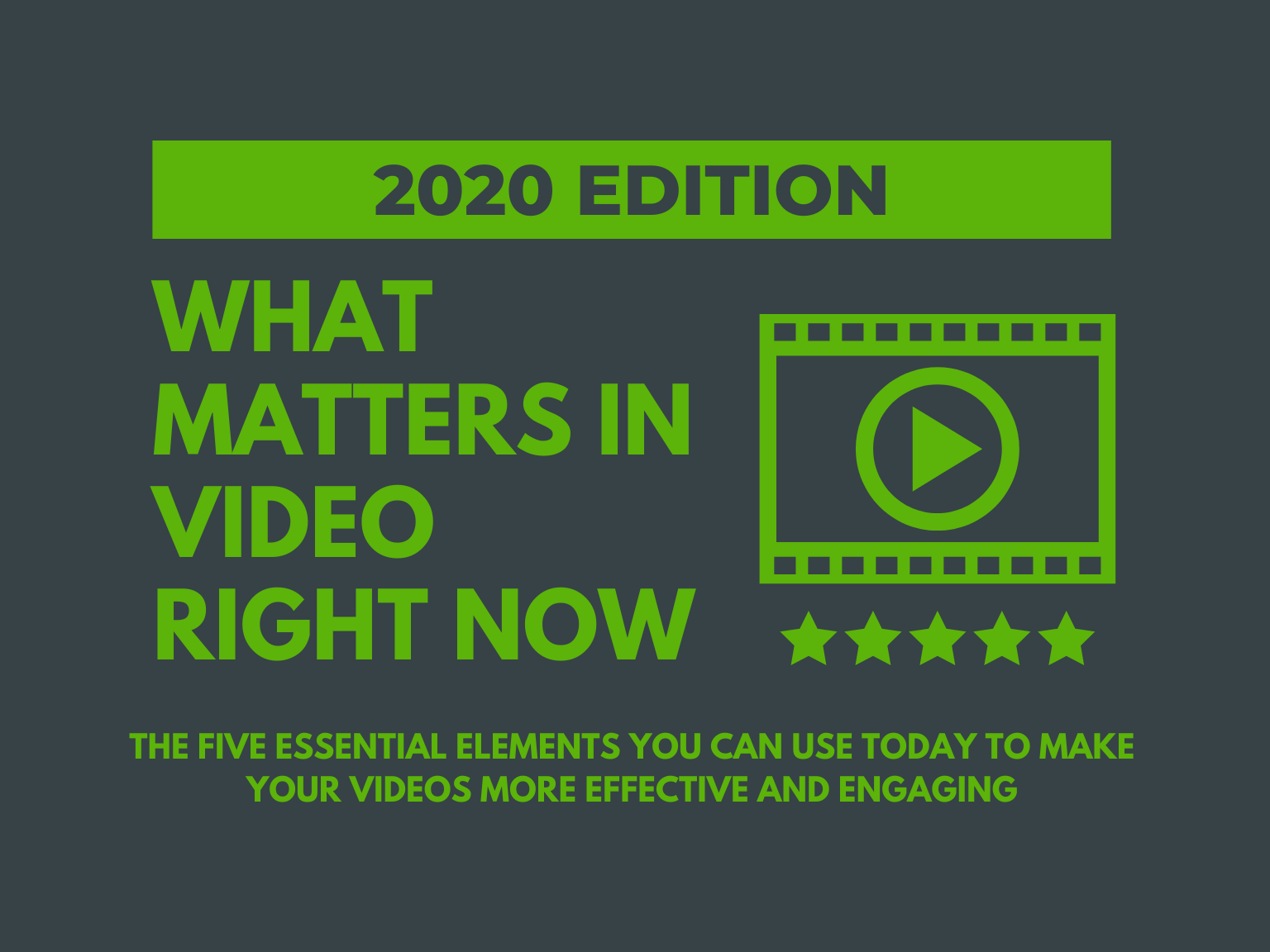Video isn’t just the future. It’s right now. In fact, video traffic in 2019 was 15 times higher than in 2017, and is projected to be 82% off all internet traffic by 2022.
It’s easy to see why.
Video is the fastest, most effective, and efficient way to highlight new product features, provide quick and easy customer support, or teach someone a new skill or concept.
Your customers and colleagues don’t want to wade through wordy documentation or how-tos. They want to quickly and easily grasp new concepts and get on with their lives.
And video makes that easy.
But how do you know you’re doing video right?
We analyzed nearly 100 great instructional and information videos to see what made them great.
And we found five essential (and easy!) elements you can add right now to make sure your videos are the best they can be.
What we did and why we did it
In the research for our ebook, Video Viewer Habits, Trends, and Statistics You Need to Know, we asked survey participants to submit examples they believed were great instructional and informational videos. In all, we received nearly 100 submissions!
Using a common rubric to ensure we looked at the same things and assessed the videos in the same ways, a team of TechSmithies then watched and analyzed all of the submitted videos to identify common elements.
But why did we do it? We already had a wealth of information from our survey that detailed viewing habits, viewer preferences, demographic information, and more.
Record professional videos with Camtasia
Camtasia’s features make video recording and editing super easy
Download now
The answer is simple: To see what real people thought about real videos.
It’s one thing to ask people about their habits and preferences, it’s quite another to see those preferences play out in the videos they choose to view.
Remember, we didn’t choose these videos, our survey participants did. These are the videos they identified as great. We wanted to see if we could pick out the things they had in common to help you, the video creator, identify ways you can make your videos better, more engaging, and more effective in 2020 and beyond.
Some of it was surprising and some of it wasn’t.
But most importantly, all of it reinforced what we already knew: Your videos don’t need to be perfect to be effective.
With the right tools, anyone can create useful, engaging, and powerful videos, no pro-skills required.
What makes a great video in 2020?
The chart above illustrates the most common elements of the nearly 100 videos we analyzed. It’s not exhaustive, but it shows some interesting data.
For example, PowerPoint Slides is relatively low on the list, showing up in just over 10% of the videos. This is especially telling because many informational and instructional videos use PowerPoint and other slide presentations to relay important information.
That doesn’t mean you can’t include a slide deck in your video, but you may also want to think about what other elements you can include to increase interest and engagement.
In fact, that’s really the point. This list isn’t about making sure you include one (or all) of these elements to make your video better. Your true goal is that viewers enjoy your videos enough to watch until the end and get the information they need.
Including all these elements is a field-tested way boost your video engagement.
1. Proper video length
For quite some time, the conventional wisdom about video length has been “the shorter the better.” And, that’s mostly true. The vast majority of the videos we analyzed — 92% — came in under 20 minutes. But deeper analysis found some exceptions to the typical advice.
While it’s true that people generally prefer videos less than six minutes in length, this chart shows an appetite for videos that are considerably longer. In fact, people preferred videos that were 10 to 19 minutes long just as much as the three to four minute ones.
So why the seeming discrepancy?
Because asking about the ideal video length is the wrong way to frame the question. It’s not about what length is best for all videos. It’s about what length is best for each video.
In other words, you want to ensure your video is the right length to accomplish its goal. For some topics and audiences, a longer video works great. For others, shorter is better.
It’s called right-sizing your video. Don’t try to do too much and don’t try to do too little. Just like Goldilocks, you want your video length to be “just right.”
You can learn a lot more about right-sizing your videos here.
2. Good audio
Want to make a great video? Make sure you have great audio. A whopping 75% of the videos we analyzed had clear and easily understandable voiceovers. But that’s not all. Almost 90% of the videos that submitters rated four or five stars for “how accurately did the video achieve its goal” and “how did you personally rate the video” had clear audio.
While our research didn’t show that people will stop watching a video for poor audio quality, it’s clear that good audio helps a video perform better overall.
But how can you be sure your voiceover is the best it can be?
The short answer: Get a microphone.

While your computer’s or smartphone’s built-in microphone works for video calls, etc., to ensure your audio quality hits the mark, invest in a stand-alone mic. Luckily, you don’t have to break the bank to get a decent microphone. Even a cheap standalone mic will likely outperform a built-in one.
You can find out more about microphones and ensuring audio quality right here.
Oh, and don’t forget about music. While it’s not nearly as important as clear voiceover audio, nearly 50% of the videos we reviewed included music either at the beginning and end or throughout the whole thing.
Music can add interest, especially in videos that don’t feature a person speaking. Learn more about how to add music to a video.
3. Camera video
While a screen recording can enrich software demos and training videos, other types of instructional and informational videos benefit from camera video. In fact, more than 70% of the videos we reviewed had real-world video included somewhere in the clip.
Camera video is great for showing how your product works, demonstrating a physical process such as how to perform CPR, showing a physical space, and more.

Remember, you don’t need a fancy camera to shoot great real-world video. Your smartphone is almost certainly enough for most applications.
Even if you don’t need to show the real world, adding a friendly face to your video also greatly increases engagement and interest for your viewers.
Nearly half of the videos we analyzed had a visible speaker at some point.
Don’t worry if you’re a bit camera-shy. The speaker doesn’t have to be you! Feature one of your subject matter experts to help put a face to the message.
5. Context
Nearly 65% of the videos we analyzed contained an intro clip or title card.
An intro clip or a title card at the beginning of your video can provide good information to help anyone watching the video understand what they can expect. They also add a touch of professionalism, branding, and consistency.
A title card also gives you a nice frame to use as your video thumbnail.

Pro tip: Keep your title card or intro clip as short as possible. One to three seconds should be long enough.
Viewers also benefit from further context and information during the video. Text overlays, including information such as warning signs, part numbers, instructions, and the name of a speaker can add interest and provide valuable information to help viewers learn the most from the content.
More than 55% of the videos we analyzed included this kind of text information to provide more details. Graphical callouts, including arrows, icons, and highlights that are placed within the video, are also an effective tool to direct attention and provide context to viewers and learners.
It’s easier than you might think to add title cards, text callouts and overlays, and more. Check out this article on How to Add Text to a Video.
Want to make sure your videos are consistent? Camtasia makes it easy with templates. Find out how to create and use video templates here.
Bonus: Call to action
So they watched your video. What’s next? What do you want them to do? Do you want them to continue their learning experience with the next video in a series? Can they go somewhere for more information or to buy your product?

Tell them!
It’s not always clear to viewers what they should do after watching your video if you don’t let them know.
Add a call-to-action to instruct the viewer to watch a related video, take a quiz, fill out a worksheet, download related resources, or actively apply the knowledge in the real world.
More than two-thirds of the videos (64%) we analyzed included such a call to action, giving viewers clear direction on next steps or where they can learn more.
Keep in mind, depending on where you host your video, you may not be able to link to other content from within the video. Instead, you can put your links in the video description and refer to it in the video.
It’s time to take your videos to the next level (and it’s way easier than you think)
Video is essential. And, even the most rudimentary videos can be much better than wordy and hard-to-follow documentation, learning materials, emails, and more.
But, by analyzing nearly 100 great instructional and informational videos, we learned a ton about what makes them great and why they were so effective.
Best of all, it shows once again that you don’t have to be a video pro to create pro-quality videos. Take advantage of what we learned to help take your videos to a whole new level.
Your viewers will retain more the information they need and they’ll be more likely to come back for more!
Record professional videos with Camtasia
Camtasia’s features make video recording and editing super easy
Download Free Trial



Share